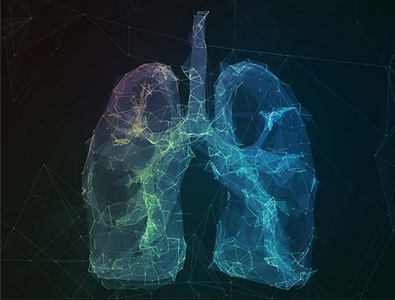Manage Shortness of Breath with Lung Cancer
A distressing symptom of lung cancer you may be experiencing is shortness of breath, also called dyspnea, which causes you to have difficulty catching your breath or to feel tightness in your chest. Shortness of breath may come on with physical activity, or even while resting.
Having problems breathing can be scary, but the good news is there are practical tips to prevent, manage and treat this common complication of lung cancer.
How the Lungs Work
The lungs are the largest organs in your body. Working with the rest of your respiratory system — which includes the lungs, airway and diaphragm — they are responsible for transporting oxygen into your body.
When you breathe in, you inhale oxygen through your nose and mouth. The oxygen travels down your windpipe, a strawlike structure that’s also called a trachea, into two tubes, called bronchi, which attach to your lungs. Those tubes break off into a series of thin branches, called bronchioles, leading to tiny, balloonlike air sacs, called alveoli. These air sacs are covered with blood vessels that send the oxygen up to your heart, from where it’s dispersed throughout your body. When you breathe out, the whole process happens in reverse order, and what you exhale is carbon dioxide, a gas that rids your body of waste.
What causes shortness of breath with lung cancer?
Sometimes, lung cancer tumors grow in a way that blocks airways, put pressure on lungs or cause inflammation in the respiratory system. All of these situations can prevent your respiratory system from working properly, leading to problems getting in enough air.
“Shortness of breath is a common symptom, but the good news is that it can be managed quite well,” says Lonny Yarmus, a board-certified interventional pulmonologist in the Lung Cancer Program at the Johns Hopkins Kimmel Cancer Center. Yarmus explains that the most common causes of shortness of breath, as related to lung cancer, include:
-
Blocked airways: Lung tumors can grow into or press against the airway, narrowing the passage and making it difficult to get enough air in and out of the body.
-
Fluid buildup: In some patients with lung cancer, lung cancer cells invade the space between the lungs and the chest wall, called the pleural space. This condition, called pleural effusion, causes fluid to build up around the lungs, making it harder for the lung to fully expand and take in enough air.
-
Low levels of oxygen in the blood: Lung cancer can decrease red blood cells, which are responsible for transporting oxygen from the lungs up to the heart and the rest of the body.
Frequently Asked Questions

Dr. Richard Battafarano, Director of the Division of Thoracic Surgery at Johns Hopkins common answers questions about lung cancer prevention and treatment.
Treatments to Relieve Shortness of Breath
Talk to your doctor about noninvasive treatments that can help you breathe, like noninvasive interventional pulmonology procedures, including bronchoscopy, a sophisticated, minimally invasive technique to open up the airways.
More Tips to Manage Shortness of Breath
Generally, leading a healthy lifestyle is your best approach to help manage shortness of breath and other health complications related to lung cancer. The following habits can help you breathe easier:
-
Quit smoking.
-
Avoid secondhand smoke.
-
Stay hydrated; aim for eight glasses of water a day.
-
Practice gentle, deep breathing exercises.
-
Get sufficient rest.
-
Eat a healthy diet.





